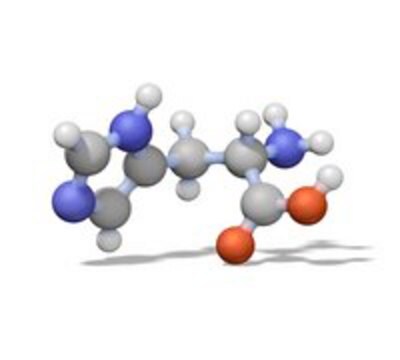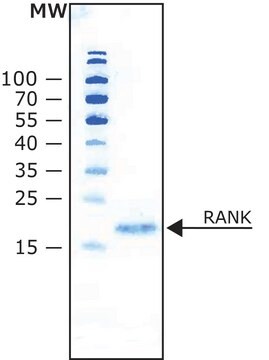T6522
Trypsin inhibitor from Glycine max (soybean)
powder, BioReagent, suitable for cell culture
Sinónimos:
SBTI
About This Item
Productos recomendados
origen biológico
Glycine max (soybean)
Nivel de calidad
tpo
Type I-S
Línea del producto
BioReagent
Formulario
powder
actividad específica
(One mg will inhibit 1.0-3.0 mg of trypsin with activity of approx. 10,000 BAEE units per mg protein.)
mol peso
20.1 kDa
concentración
10 mg/mL
técnicas
cell culture | mammalian: suitable
solubilidad
balanced salt solution: 1 mg/mL
serum-free medium: soluble
Condiciones de envío
ambient
temp. de almacenamiento
2-8°C
¿Está buscando productos similares? Visita Guía de comparación de productos
Aplicación
Acciones bioquímicas o fisiológicas
Componentes
Definición de unidad
Nota de preparación
Solutions can retain activity when stored short-term at 2-8° C. Solutions are stable in frozen aliquots at -20°C.
Nota de análisis
¿No encuentra el producto adecuado?
Pruebe nuestro Herramienta de selección de productos.
Aplicación
Palabra de señalización
Danger
Frases de peligro
Consejos de prudencia
Clasificaciones de peligro
Resp. Sens. 1 - Skin Sens. 1
Código de clase de almacenamiento
11 - Combustible Solids
Clase de riesgo para el agua (WGK)
WGK 3
Punto de inflamabilidad (°F)
Not applicable
Punto de inflamabilidad (°C)
Not applicable
Equipo de protección personal
Eyeshields, Gloves, type N95 (US)
Elija entre una de las versiones más recientes:
¿Ya tiene este producto?
Encuentre la documentación para los productos que ha comprado recientemente en la Biblioteca de documentos.
Los clientes también vieron
Protocolos
Enzymatic Assay of Trypsin Inhibitor
Chromatograms
application for HPLCNuestro equipo de científicos tiene experiencia en todas las áreas de investigación: Ciencias de la vida, Ciencia de los materiales, Síntesis química, Cromatografía, Analítica y muchas otras.
Póngase en contacto con el Servicio técnico









